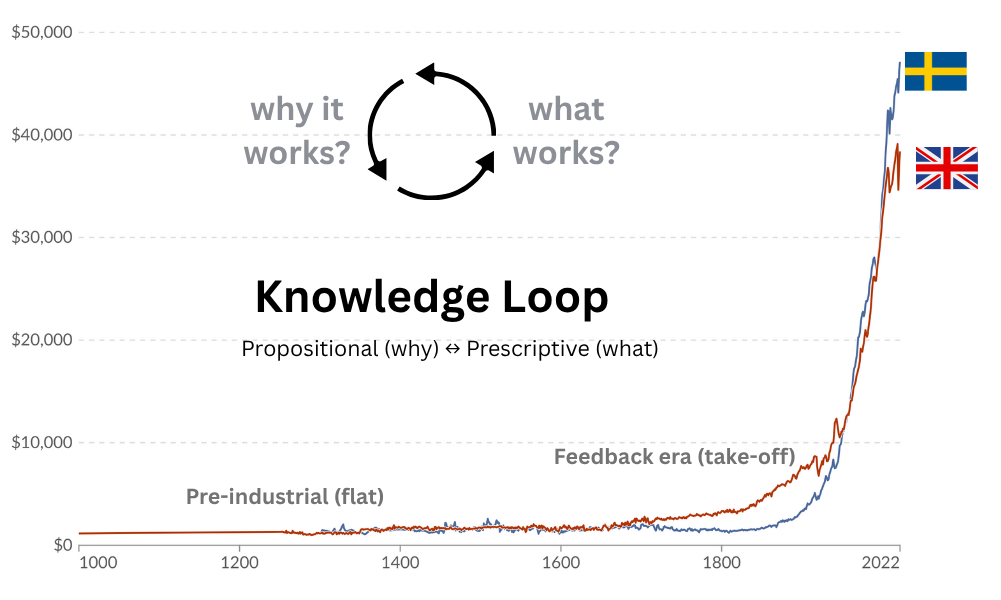
This year’s Nobel Prize in Economic Sciences was awarded to Joel Mokyr, Philippe Aghion, and Peter Howitt
“for having explained innovation-driven economic growth.”
Mokyr received half “for identifying the prerequisites for sustained growth through technological progress,” while Aghion and Howitt shared the other half “for their theory of sustained growth through creative destruction.”
Together, they explain why modern economies continue to improve. In this post, I’ll zoom in on Mokyr’s contribution—the part about how the knowledge engine became self-sustaining—because it maps directly to how engineers, scientists, and managers design systems that improve over time.
Why Economic Growth Suddenly Took Off
If you look at GDP per capita for England or Sweden from 1300 to 1700, the line is almost flat. Despite inventions like the windmill, plough, and printing press, the economy hardly grew.
Then, from the Industrial Revolution onward, growth averaged 1-2% per year—a steady climb that continues even today.
What changed?
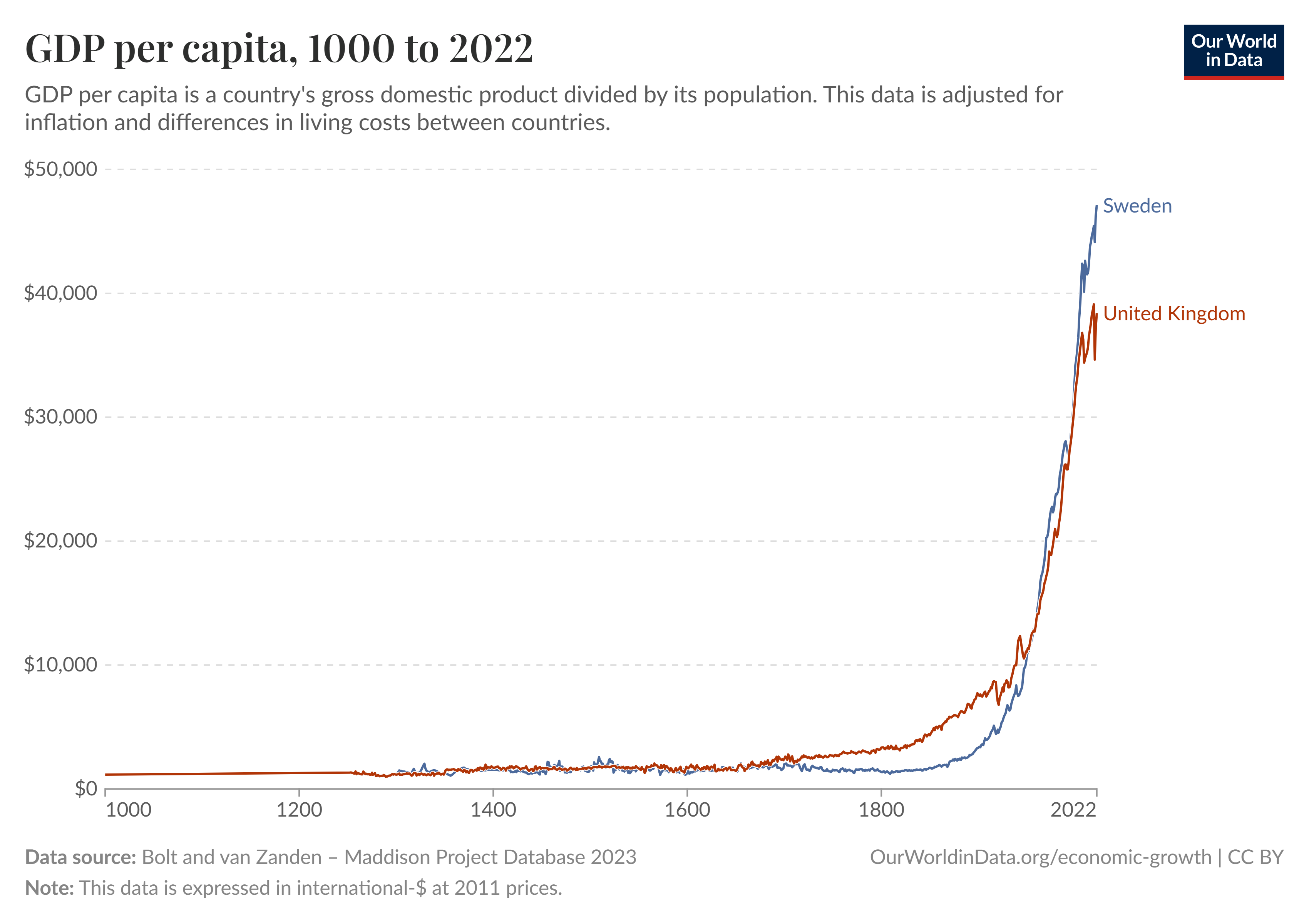
Mokyr’s answer: knowledge began to feed on itself. Science started explaining why things worked, not just how to make them work. That feedback turned innovation from random sparks into a self-sustaining flame.
Two Types of Knowledge
Mokyr distinguishes between two kinds of knowledge:
Prescriptive knowledge – what works, based on experience and observation.
Propositional knowledge – why it works, based on scientific understanding.
Before the 18th century, progress relied mainly on prescriptive knowledge—trial, error, and habit. After the Industrial Revolution, propositional knowledge started reinforcing it, forming a feedback loop that powered continuous innovation.
Sports Analogy: From Routine to Science
Think of an athlete a few decades ago who swore by a fixed pre-match meal because it seems to help. That’s prescriptive knowledge
Modern sports science, however, studies energy metabolism, glycogen storage, and recovery cycles. We now know why certain meals improve endurance and when to take them. That’s propositional knowledge feeding back into training and nutrition plans—creating a loop of sustained improvement.
Modeling the Knowledge Loop
To make this more tangible, I built a simple system-dynamics model showing how knowledge evolves.
Imagine a “tank” that stores our useful knowledge — the mix of scientific (propositional) and practical (prescriptive) understanding that drives innovation.
Model 1 – Before the Industrial Revolution
In the pre-1700 world, innovation was mostly trial and error. New ideas appeared sporadically—say, one invention every few years. But there was no strong feedback between science and practice.
If you simulate this, the “knowledge stock” rises slightly, then levels off — a flat line similar to the GDP curves of England or Sweden before 1750. Innovation happens, but it doesn’t compound.
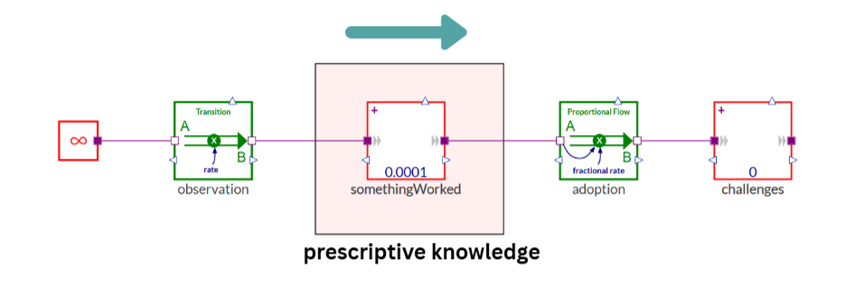
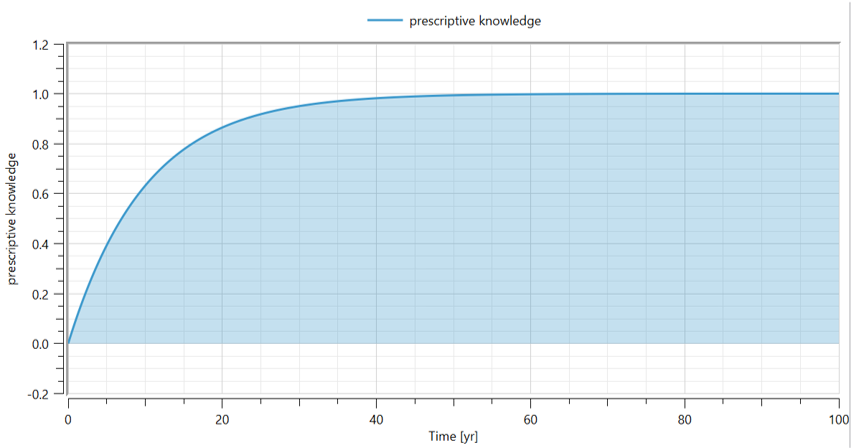
Knowledge growth before the feedback era, flat curve due to weak reinforcement.
Model 2 – The Feedback Era (Industrial Revolution Onward)
What changed after 1750 wasn’t just the pace of invention—it was the wiring of the system itself. For the first time, knowledge began to loop back on itself.
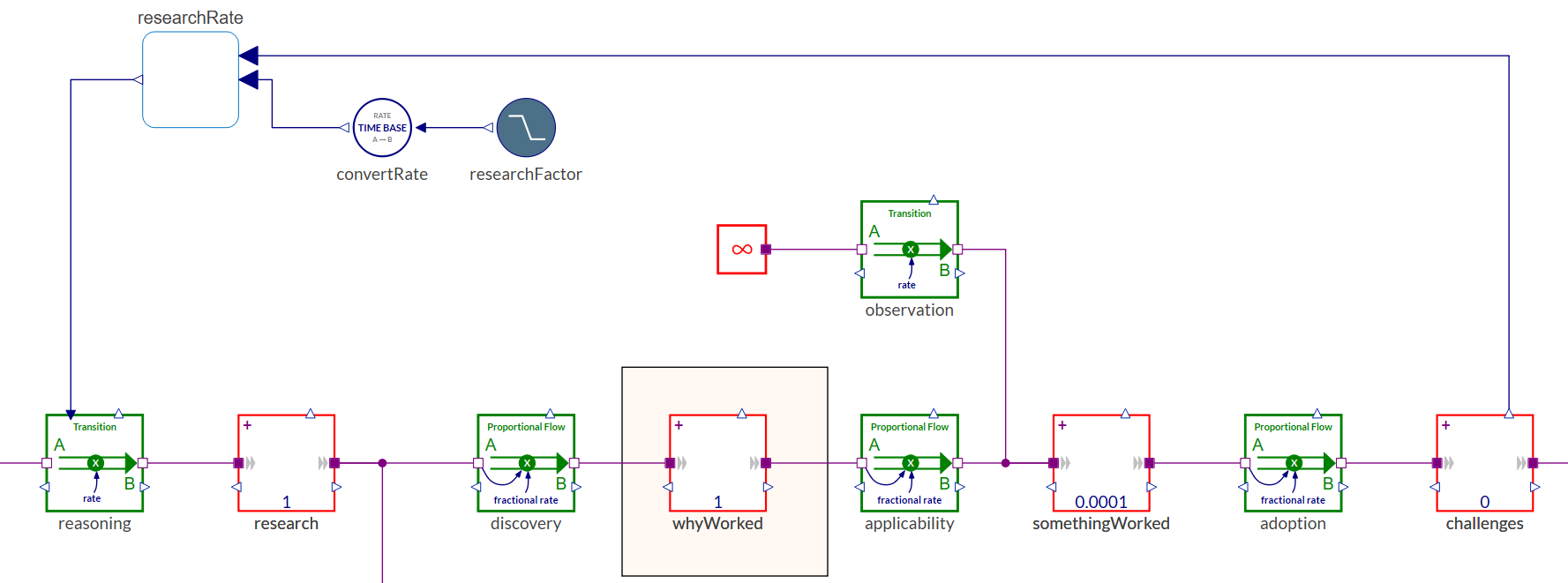
In system-dynamics terms, an open-loop world became a closed-loop one. Research led to discovery, discovery built useful knowledge, and every successful application raised new questions that fed back into research—a continuous cycle of learning and doing.
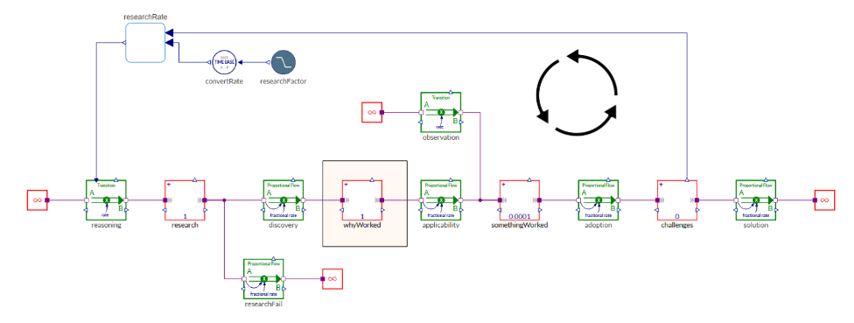
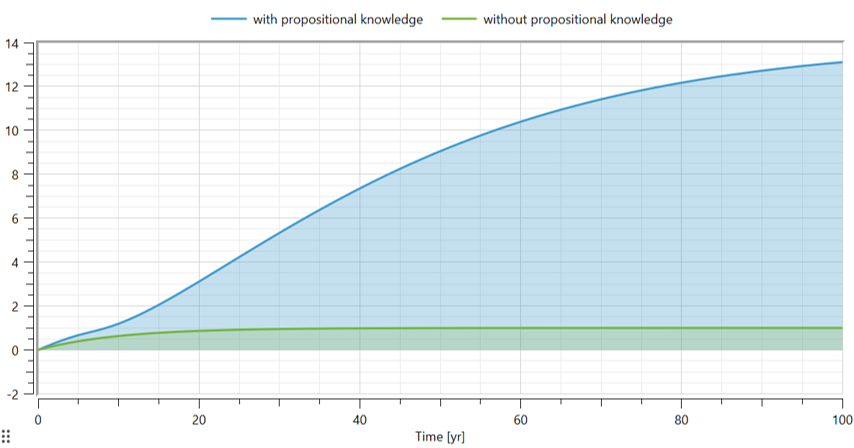
As this feedback strengthened, innovation became self-propelling. The model shows the knowledge curve bending upward—the hallmark of positive feedback.
These two plots visualize exactly what Mokyr described:
- Before the loop, innovation behaves like a first-order linear system—progress stalls.
- After the loop, it becomes a self-propelling system—progress compounds.
My Learnings from this
- Don’t stop at what works—ask why it works. The leap from “trial and error” to “understanding and prediction” turns local optimizations into global breakthroughs.
- Design reinforcing loops. Whether in R&D, AI, or manufacturing, connect research, data, and practice so that each improvement fuels the next.
- Encourage creative destruction. New ideas often disrupt existing systems—but that’s exactly how sustained growth happens.
From Industrial to Innovation Revolution
Mokyr’s framework shows that sustained progress doesn’t depend solely on capital or labor—it depends on how fast knowledge can reinforce itself.
In engineering terms, the system became closed-loop. Today, AI, renewable energy, and biotechnology are continuing that same trajectory—the S-curve that started in the 18th century.
 Attachments:
Attachments: